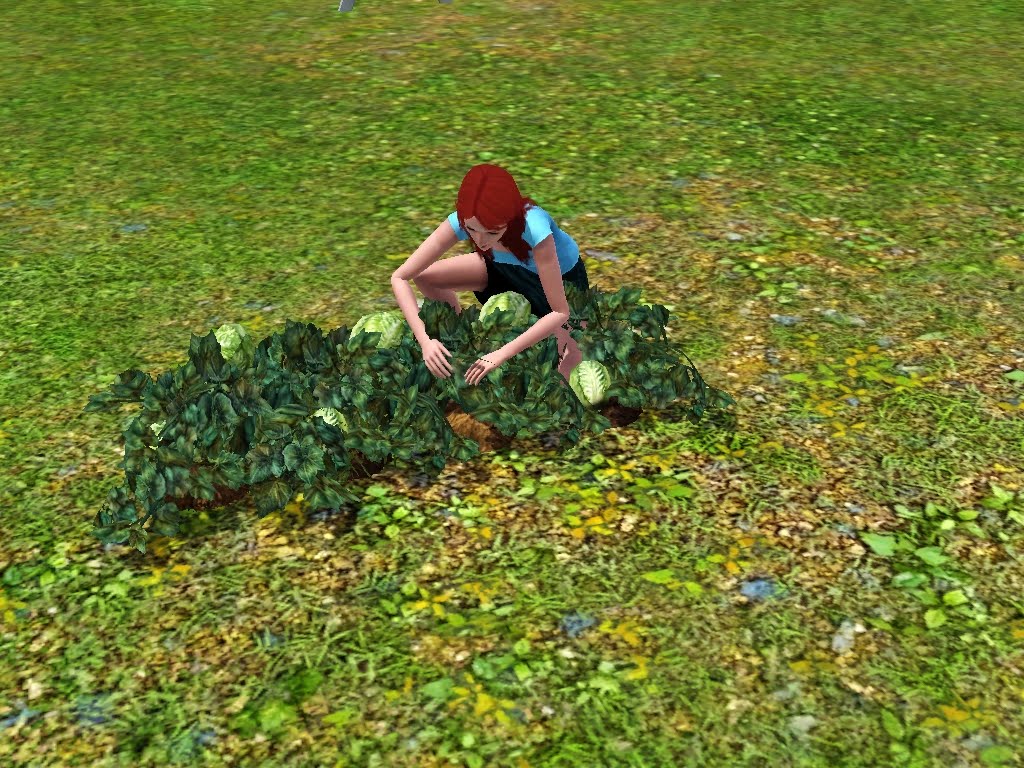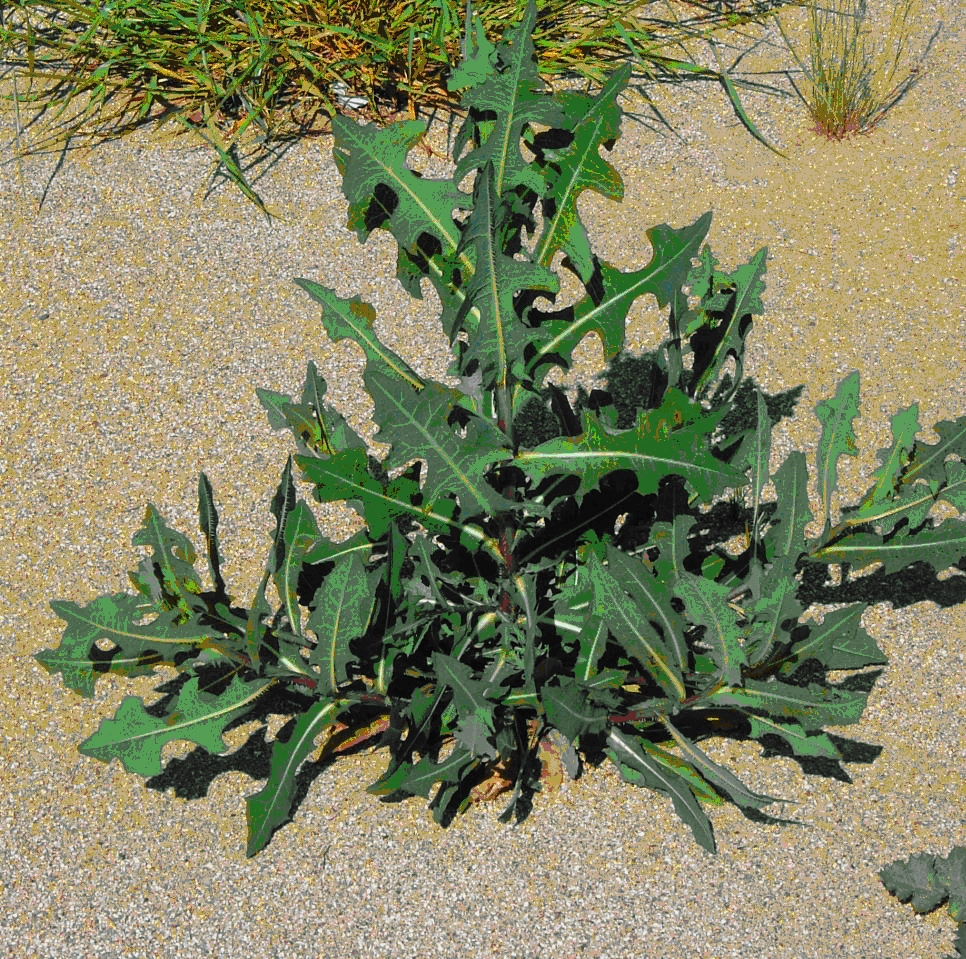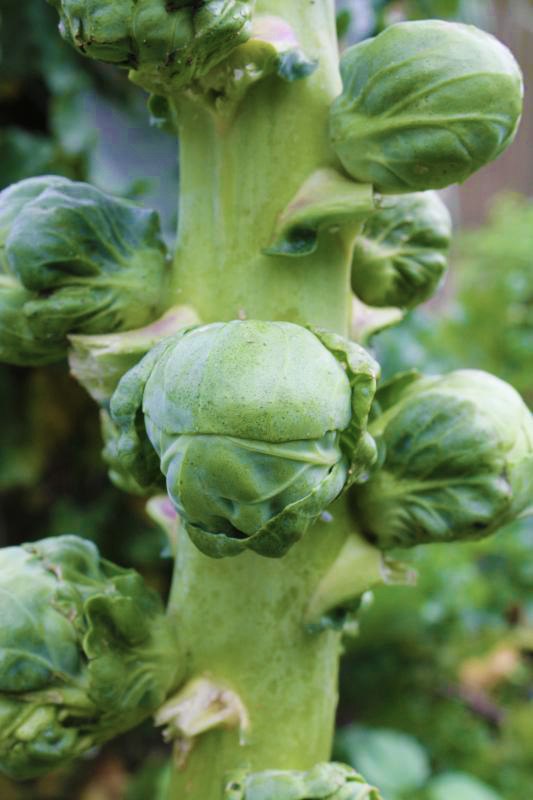Ronnie de Noube
5th Period Science
(Dr. Wainwright)
Lettuce: A Comparison of Sim and Outer-World Varieties
The common name “lettuce” is applied to at least two, and possibly more, distinct families of leafy plants that are used in similar ways. This report compares common or Sim lettuce (Brassica sp.) with Outer World lettuce (Lactuca sativa) and with Outer World food plants in the Brassica family.
Both lettuces are products of selective breeding, carried out over such a long period that they now resemble their wild ancestors very little. Conversely, their edible portions, which result from selection for similar qualities, have similar characteristics that belie their divergent origins.
Outer (Lactuca ) lettuce[1] is descended from a milkweed (still extant and known as “wild lettuce”) which, though not truly inedible, is unappealing. The leaves of this Lactuca wild lettuce are flat, thin, and bitter, without the crunchy mouth-feel of either kind of domesticated lettuce, and without the interesting flavours of nutritious mineral compounds that redeem other edible wild greens (e.g. dandelion, mustard, etc.)
The growth habit of wild Lactuca accounts for the bizarre form of modern Outer lettuce – a rosette of leaves forming directly at the crown above a milkweed taproot. The entire Outer lettuce plant resembles a single head of our (true) lettuce, and is used for the same purposes.
There are certain advantages to eating the leaves rather than a structure involved in reproduction. For example, many varieties of Outer lettuce give the grower the option of harvesting prior to full maturity, by picking only the large outer leaves. However, the fact that the edible portion grows essentially in mud makes the Outer lettuce a startling choice for a food product that is to be consumed raw. Growers are at some pains to prevent the plant from rotting even long before harvest, especially with the highly marketable variants that produce good tight heads. Looser varieties are less prone to rot, but are susceptible to other types of contamination as mud, manure, insects etc. are easily trapped at the leaf bases. In much earlier times, Outer lettuce was cooked, or at least a hot dressing was poured upon it; in modern times its relatives in the genus Cichorium (endive or chicory) are sometimes cooked, but Lactuca itself has been bred to be eaten raw and is too mild, both in flavor and in texture, to withstand cooking.
For Sim lettuce, also, domestication has selected against bitter-tasting compounds and in favour of appealing texture. Although Sim lettuce is hardy (given sufficient water) and has partly naturalized in the area around Stoney Falls, the truly wild ancestor is no longer known. That ancestor is thought to have resembled the Brassica variant known to our Outer counterparts as “Brussels sprouts” (B. oleracea var. gemmifera). This conjecture is based mainly on morphology: in both Brussels sprouts and true lettuce, heads are borne up on strong stalks or stems, and can be harvested one by one (without destroying the plant) as they mature. Modern Sim lettuce differs from its conjectured ancestor (and from many other Brassicas) in having relatively broad leaves, and also in bearing heads upon multiple side stems rather than one central stalk.†
I will now offer a theory regarding the missing link, or lack of a firmly identified wild ancestor for our lettuce. (This is a conjecture or theory, in contrast to the above material which is well accepted by Sim botanists.)
It is my theory that Sim lettuce does not merely resemble, but is the very same species as one of the common Outer World Brassicas, probably B. oleracea. In this theory, a single mutation accounts for the absence of a central stalk, which is the major morphological difference between Sim lettuce and the known Brassicas. The remaining differences are well within the range that can be accounted for by conventional selective breeding. I consider it likely that Sim lettuce and conventional B. oleracea differ by five genes or fewer.
The challenge for Sims testing this theory is the lack of genetics technology that could test it directly by examination of DNA. I will therefore propose some tests that are within the scope of science available to us.
First, a basic sanity test can be applied to the hypothesis: are there any other known cases in which a very small number of mutations can cause such a striking difference in the structure of a food plant? For answer, we can cite the two forms of the grass Zea mays.[2] The wild Z. mays var. teosinte is multi-branched and has inedibly hard seeds. By contrast, the cultivated Z. mays mays bears ears of maize (sweet corn) – a structure completely missing in teosinte – along a single stalk. It is now well accepted that a single mutation accounts for the crucial difference in side branch length, and that only five genes determine the entire difference between mays and teosinte. That discovery by corn geneticists explained the otherwise-puzzling sudden appearance of the new variety and the absence of any intermediate forms (either currently or in the fossil record.) The coincidence of the near-simultaneous appearance of maize and human beings in the same area is now explained as a case of humans identifying and cultivating a useful, naturally-occurring variant (which may have occurred one or more times previously but, lacking human support, would have been extinguished by competition.) I propose that the same process may account for Sim lettuce.
Lacking the technology to examine or back-trace the nuclear DNA of Sim lettuce, we cannot show where it came from. However, we can test where it is able to go. If the genetic difference is as small as I propose, then Sim lettuce should be able to freely cross with Brussels sprouts. Developing this hybrid would therefore be a reasonable experiment.
So far as Mendel was correct, the next generation of offspring of this hybrid Brassica should show a range of characteristics, according as the pairs of genes they take from their parents are both of Sim lettuce origin (25% probability), both of Outer origin (25%), or one of each (50%). If the number of genes implicated in the varietal difference is quite small, then it is likely that the critical genes in some of the second-generation offspring will be entirely lettuce, or entirely Brussels sprout, in origin.[3] These plants would be immediately identifiable, and their proportion among the total population of hybrid lettuce offspring would indicate the number of genes involved in the differences. The sensitivity of this test depends on the number of plants grown but, considering the reasonable likelihood of their being tasty, a large experimental grow-out would not be unreasonable.
References
- Wikipedia contributors, “Lettuce,” Wikipedia, The Free Encyclopedia, http://en.wikipedia.org/w/index.php?title=Lettuce (accessed Month 9, Day 23, 2012).
- Genetic Science Learning Center, “The Evolution of Corn,” Learn.Genetics, http://learn.genetics.utah.edu/content/variation/corn/ (accessed Month 5, 2012).
- Kingsley, David M., “Selection in Action” (presentation in 2005 Holiday Lectures on Science, Howard Hughes Medical Institute). Video at http://www.hhmi.org/biointeractive/evolution/lectures.html (accessed Month 5, 2012).
† The name “Brussels sprout” is itself a convoluted irony, since “sprouts” ought properly to be very young plants. Both Brussels “sprouts” and true (Sim) lettuce are borne up on side stems of mature plants.



